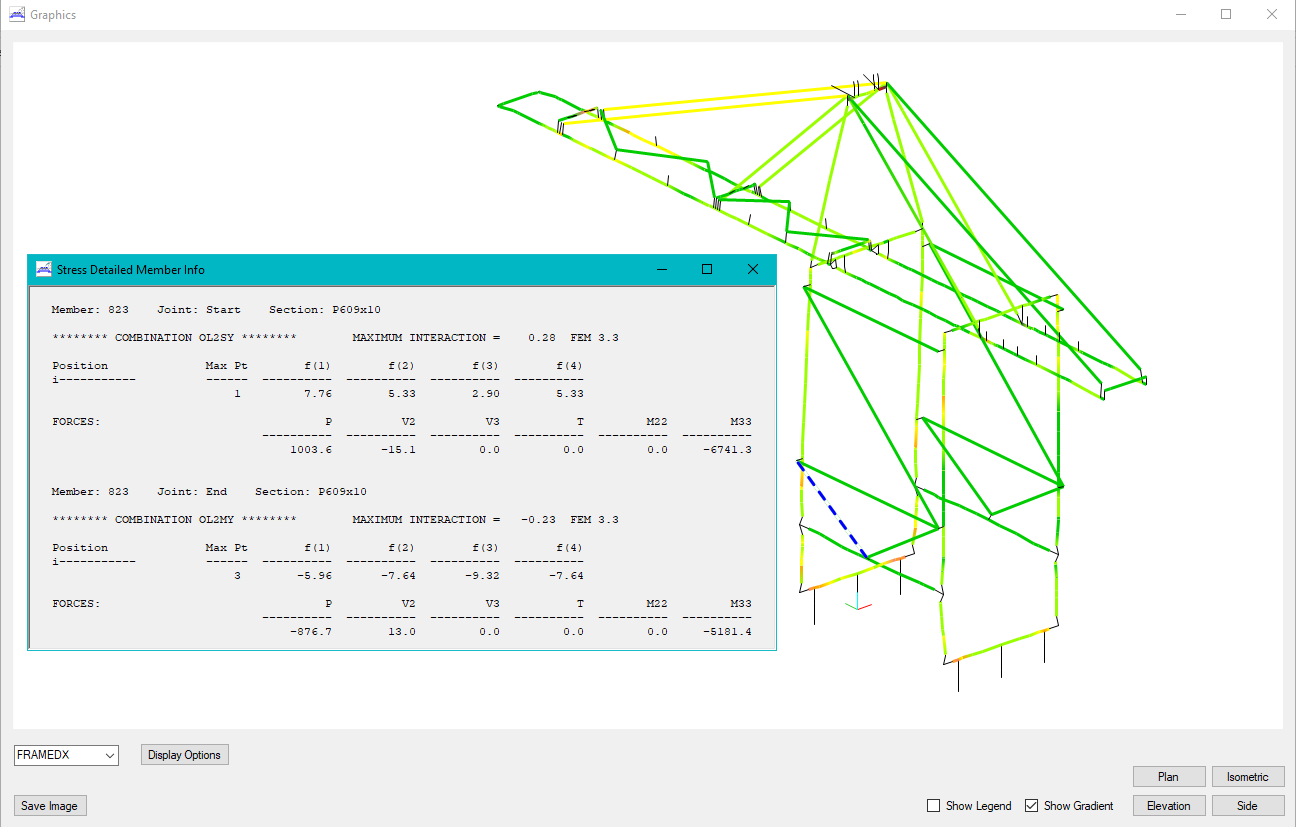Proprietary Crane Analysis Software
Casper, Phillips & Associates Inc. (CPA) has upgraded its proprietary crane analysis software, used for pre- and post-processing during finite element analysis of cranes.
The crane analysis software suite, which is a set of programs that perform both pre- and post-processing, was developed with container cranes in mind. The pre-processing module is used to develop criteria, geometry, and loads. Users note how quickly wind loads can be developed using different design codes and boundary layer wind tunnel tests.
Pre-processing is the creation of the mathematical model of the crane structure (defining structural beams, and load cases). Processing is when you take the math model and solve it to get the forces in each structural member (beams and columns). Post-processing is when you take the forces in each structural member and check to see if the structural members have adequate strength and resilience. This stage also includes checking overall crane stability (tipping over) and making sure that the crane doesn’t overload the dock.
In addition to container cranes, CPA has also used the software to analyze other material handling equipment, such as 500-ton-plus capacity Goliath gantry cranes, offshore floating cranes, stacker cranes, electric overhead traveling (EOT) cranes, bulk ship loaders, and unloaders. The versatile program has also been used on industrial structures and docks.

The programs for stress, buckling, and fatigue will automatically analyze every structural member and check every load case.
New features
CPA—the company offers a wide variety of services, including procurement, specification, design, manufacturing review, modification, and accident investigation—has introduced a myriad of new features, including the addition of EN 13001 to the existing library of crane codes. CPA said that the standard is being updated “more regularly” than the popular European crane design code European Materials Handling Federation (FEM). Many ports in Asia and Europe are starting to adopt EN 13001 for this reason.
Richard Phillips, mechanical engineer at CPA, said: “We can—and will—highlight the multitude of features that complete the system but more holistically it is a showcase of our design and design review services. Ports and terminal operators repeatedly note the effectiveness of the software; we’re not looking to generate sales, as such. With our software a crane structure can be analyzed in two to four weeks, depending on the complexity. A new crane design requires a structural analysis to assure the crane meets the purchaser’s requirements as well as applicable codes and standards. Structural analysis is also required if an existing crane design is used in a new geographic region that is subject to higher wind loads or earthquake loads.”
The upgrade allows CPA to analyze a crane structure quickly without compromising on quality. This will shorten the window for the design review and verification, which ultimately cuts down on the delivery time of the crane. Crane fabricators have also hired the company directly to help them with their crane designs.
Notably, CPA has added detailed thin panel buckling output, so the user can quickly figure out which panel is over and which load case governs. Buckling will display the governing load case not only for each plate, but each panel between stiffeners. Thin panel buckling is a localized failure of a slender plate that is part of a large beam. The detailed buckling output will automatically show the user which load case is causing the buckling issue and where the thin panel buckling occurs on the beam. This allows the user to quickly optimize their design.

CPA has added detailed thin panel buckling output. This picture illustrates what thin panel buckling looks like.
Total integration
Once the pre-processing is complete, the model is loaded into SAP2000, a commercial Finite Element Analysis program. SAP2000 solves the model and will output all forces, moments, and reactions to the post-processing programs. However, SAP2000 does not support crane design codes, which led CPA to create programs that use the SAP2000 output and check the structural members to the most popular crane codes.
Phillips said: “[SAP2000] is the best analysis software for beam modeling; it has the best non-linear time history analysis routines. For this reason, we chose SAP2000 as the processing engine for our software suite.”
He reiterated that the programs for stress, buckling, and fatigue will automatically analyze every structural member and check every load case. This includes checking each load case for the wind angle that maximizes the stress at each structural member.
This new proprietary crane analysis software is compatible with a series of design codes, including those of FEM, AISC, BS5400, DIN 15018, CMAA 70, and EN 13001. It is compatible with Windows-based PCs.







